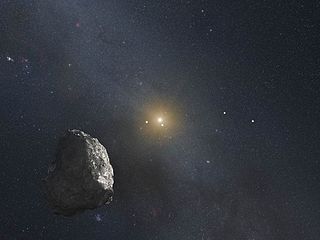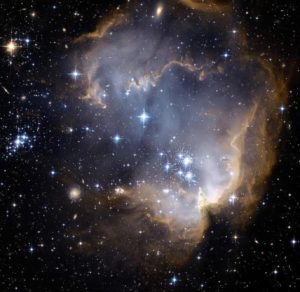
On July 17, a Kuiper Belt object named 2014 MU69 passed in front of a distant star, giving scientists on Earth an opportunity to capture the rare eclipse in their cameras.
According to scientists, MU69 is located about 6.4 billion kilometres away from Earth. It is about 30 to 50 km in diameter. The 2014 MU69 was discovered on 26 June 2014 using the Hubble during a survey to find a suitable Kuiper belt object for the New Horizons probe to fly by. MU69 is too faint to be observed with normal telescopes as it has an apparent magnitude of nearly 27, and therefore it could be discovered only with the help of Hubble.
On 1 January 2019, NASA’s New Horizons spacecraft will whiz past MU69, making it the most distant object ever visited by a spacecraft from Earth. NASA selected it as New Horizons’ target in August 2015. The course of New Horizons was changed four times in October and November 2015, and now it is heading towards 2014 MU69. Scientists don’t know much about the object, except that it is red, as suggested by Hubble data last year. The orbital period of MU69 is slightly more than 295 years. It has a low eccentricity and inclination compared to other objects in the Kuiper Belt, suggesting that it is a cold classical Kuiper belt object and most probably did not undergo significant perturbations.
On July 17, 2017, MU69 passed in front of a distant star that has not yet been named. Scientists managing the New Horizons mission were aware of the event and made arrangements to capture the occultation in their cameras. Mark Buie, an astronomer at Southwest Research Institute (SwRI) in Boulder, Colorado, with the help of 60 other observers, installed over two dozen mobile telescopes in Chubut and Santa Cruz in Argentina. The event lasted for just 200 milliseconds and scientists were able to capture the shadow of MU69 as it passed in front of the star.

“It was the most historic occultation on the face of the Earth,” said NASA planetary scientist Jim Green in a statement.
“You pulled it off and you made it happen.”
Buie is grateful to Argentinian scientists and government officials who helped to capture the occultation on July 17. They authorities even shut down a national highway on that night for two hours to ensure that there are no car headlights to increase light pollution. Some locals even parked their trucks near the observatories to stop fierce winds from spoiling the observations at the site.
New Horizons Probe
Engineered by the Johns Hopkins University Applied Physics Laboratory (APL) and the Southwest Research Institute (SwRI), under the leadership of S. Alan Stern, New Horizons is an interplanetary space probe from NASA that was designed to accomplish a flyby study of the Pluto system. The secondary mission of this spacecraft was to fly by and study some of the objects in the Kuiper belt. New Horizons mission was first in NASA’s New Frontiers mission category, and much bigger and more expensive than the Discovery missions. The cost of the mission was nearly $700 million over 15 years (2001–2016).
Launch of New Horizons was completed on January 19, 2006 from Cape Canaveral Air Force Station. The spacecraft was directly launched into an Earth-and-solar escape trajectory. On February 28, 2007, the spacecraft made its closest approach to Jupiter by flying at a distance of 1.4 million miles from the gaseous giant.
After passing Jupiter, New Horizons went in hibernation mode and was brought back in online mode on December 6, 2014. After completing it flyby of Pluto in 2015, New Horizons moved ahead for a flyby of 2014 MU69.
[Source: NASA]
